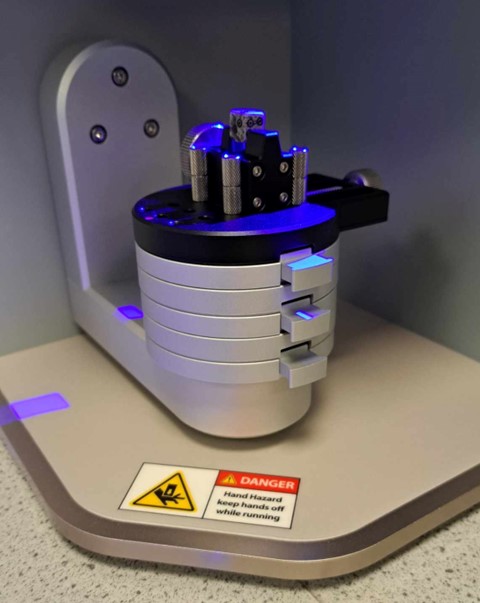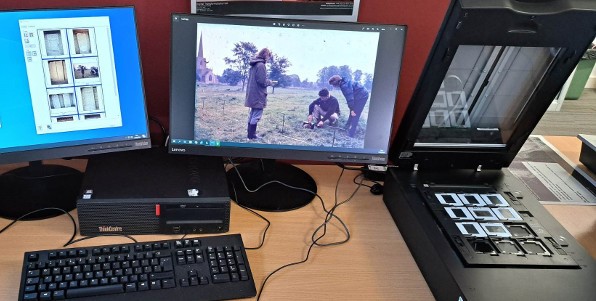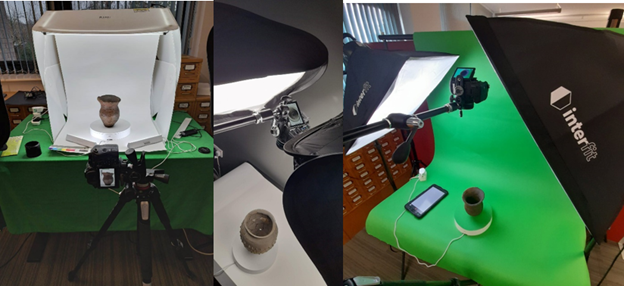
January 5, 2024, by Laura Nicholson
Arts Faculty Takeover: Student Projects in The Digital Transformations Hub – Part One
Throughout the 2023–4 academic year, we are running a new feature on the Learning Technology blog: a faculty takeover month! Each month, we will feature posts from different faculty members at the university. Every Friday, posts will highlight interesting work and ideas related to technology in teaching and learning and showcase unique projects from within the various disciplines across the UoN. In October, we had our Faculty of Science takeover; in November, it was Medicine and Health Sciences; and this month we hear from the Faculty of Arts.
The Digital Transformation Hub (DTH) is a Faculty of Arts resource centre, providing digital equipment and software both on-site and for loan. The team is on hand weekdays to provide help and advice for staff and students from the faculty. The DTH also runs a Volunteer Scheme for Faculty of Arts students who gain digital and transferable skills and work experience for their CVs by working shifts in the DTH itself but also on digital Arts projects.
This week, DTH Manager Matt Davies writes about the volunteer scheme and two of the projects.
The student volunteers
With an unprecedented twenty-eight volunteers starting in October 2023 and working across five digital projects, including one with a new external partner, it was a very busy first half of 2023-24 for the DTH!
During their first couple of weeks with us, all volunteers complete a Moodle course designed to teach them some basic digital capture skills – images, audio, and video – and a little about file formats, copyright, and metadata. They explore the DTH and familiarise themselves with its equipment, software, and loan system so that they can help users. They also sign up for one of five projects, one for each day of the week, and this is where they really begin to learn some in-depth digital skills and gain unique work experience.
The projects
Each of the projects are ‘real world’; that is, they all have an owner –a department or unit –which requires the digital work to be carried out to a professional standard. The two projects discussed in this post are both in partnership with the University of Nottingham Museum, which holds the slide collection and the artefacts used for the projects. As part of their volunteering experience, the students visited the Museum in November, were given an exclusive tour, and were taught how to handle artefacts correctly by the Keeper of the Museum, Claire Pickersgill.
Mondays: The Archaeology Slide Digitisation Project
The Archaeology (now Classics and Archaeology) department’s 35mm slide collection dates back to the 1960s and features photographs of excavations, finds, and plans worked on by members of the department. The volunteers are taught how to create metadata (information about the digital image they will produce) for each of the slides. They transcribe this from the associated card index, gleaning information such as the type, location, and period of the site and objects, as well as the names of associated archaeologists.
Flatbed scanner with Transparency Unit
They then digitise each slide using one of two flatbed scanners with TPUs (Transparency Units) in the DTH. 35mm slides have to be scanned at 3600 dpi (dots per inch – 300 dpi would be the usual!) because of their size. The students then make corrections to the digital image in Photoshop and save it as an archive standard image file (usually a TIFF). The intention is for the digital images and associated metadata to be made available online for teaching and research purposes.
You can find more details of the Archaeology Slide Project in this blog post.
Tuesdays: The University of Nottingham Museum 3D project
The DTH has been producing 3D models of artefacts from the UoN Museum since September 2020, and it’s fair to say that the workflow, along with the technology, has changed a lot over that period. Besides spending time in the DTH, where they learned the photogrammetry workflow, this year’s volunteers have enjoyed sessions in the Archaeology lab with technician Susie Sherwin learning how to use the lab’s new Artec 3D scanners.
The Artec 3D scanner
Photogrammetry
Photogrammetry is a method that involves taking many overlapping photographs of an object. In the DTH, we use a tripod-mounted DSLR camera synchronised with a turntable. The artefact is well-lit, with studio lights where necessary, so that we can capture clear, sharp images. The photographs (often more than 100) are uploaded to 3D software (Agisoft Metashape in this case), which runs through a complex process of producing a point cloud using the position and orientation metadata from the camera, generating a geometric surface, and then applying the material gleaned from the photographs to the surface -almost like wallpaper.
The Artec scanners, on the other hand, send out beams of light and record the time it takes for them to bounce back off the object. This allows a mesh of triangles to be created matching the shape of the artefact, and then, by joining up the scans, the Artec software produces the 3D model. We are still learning which method works best for specific objects; while the Artec scanners are much faster and more accurate scale-wise, DTH’s DSLR camera produces more detailed and higher-resolution surfaces. Excitingly, there is a way to combine both methods and experimentation is ongoing.
Photogrammetry equipment
You can see some of the 3D models that we have produced at our Sketchfab page.
Wednesday, Thursday and Friday’s projects will follow in our next post!
Author: Matt Davies
Calling all blog volunteers!
Would you like to promote how technology is being used in your faculty? Maybe you have some students who are also keen to share how technology has enhanced their learning experiences? If you are interested in submitting a blog post about your use of technology for teaching and learning, please do get in touch. Find out how to submit a post, or arrange to have a chat about ideas
No comments yet, fill out a comment to be the first



Leave a Reply